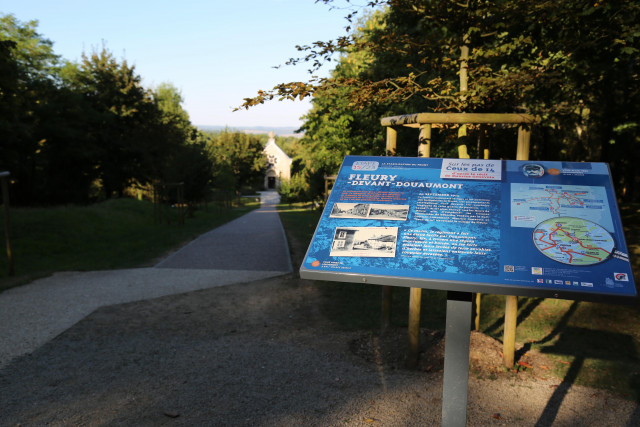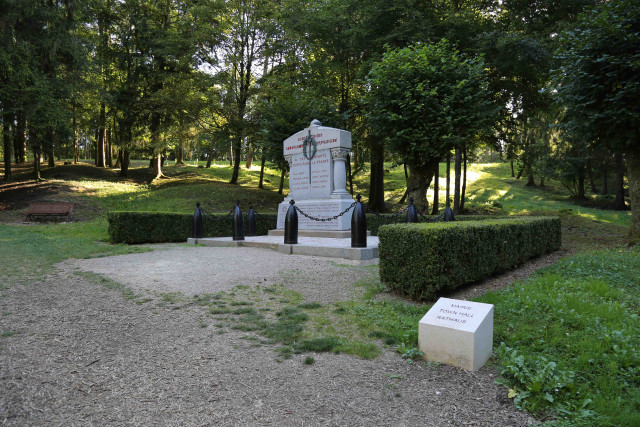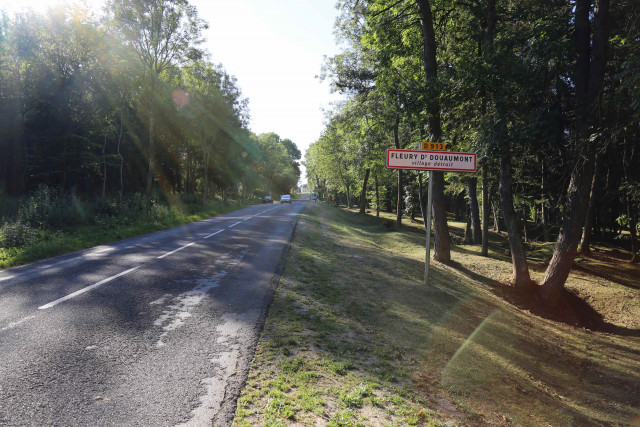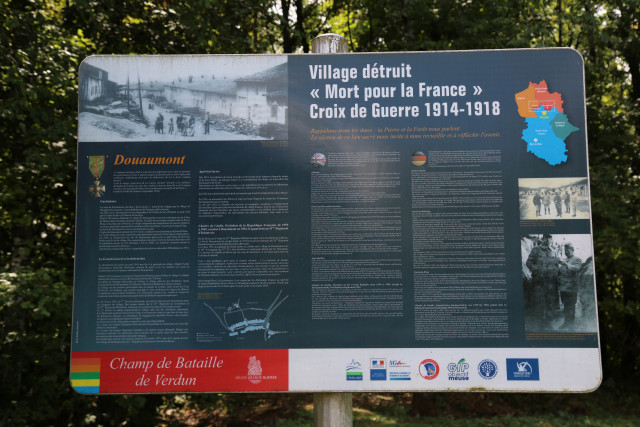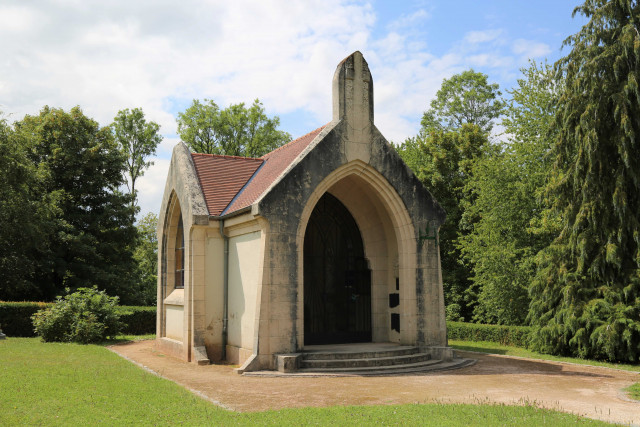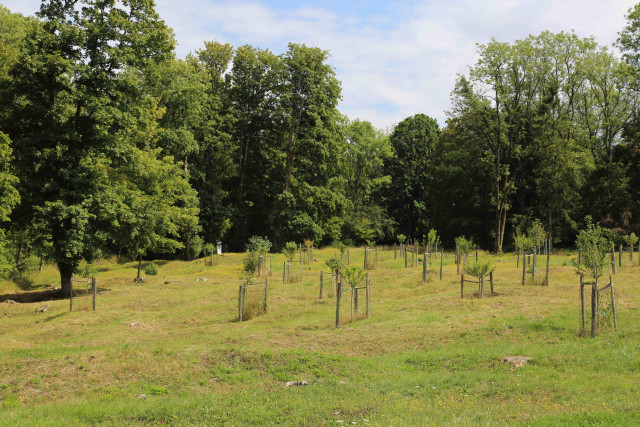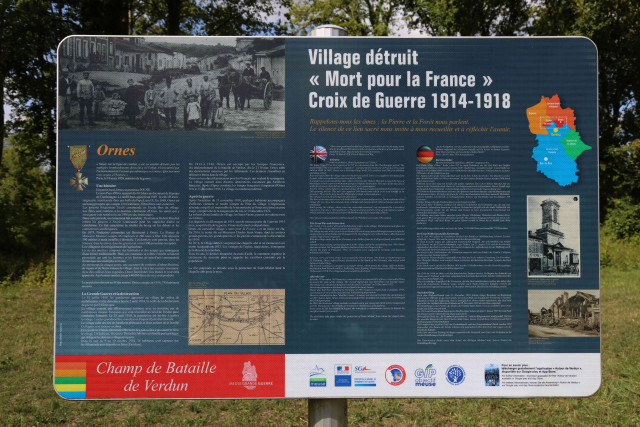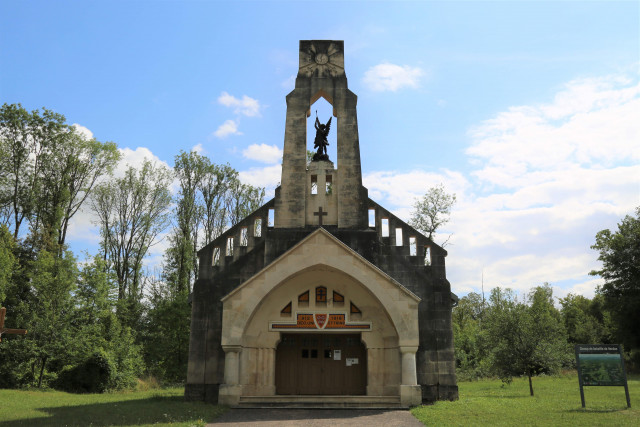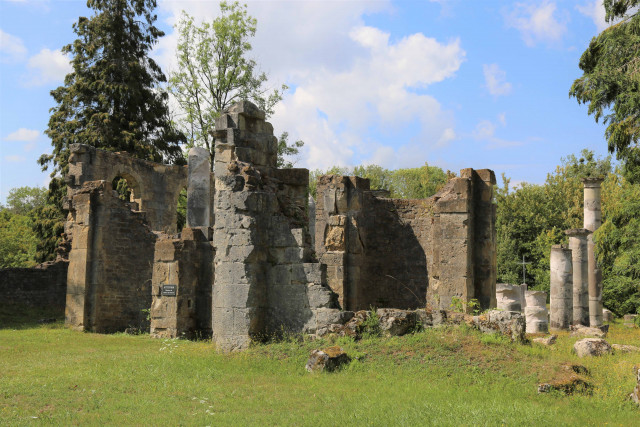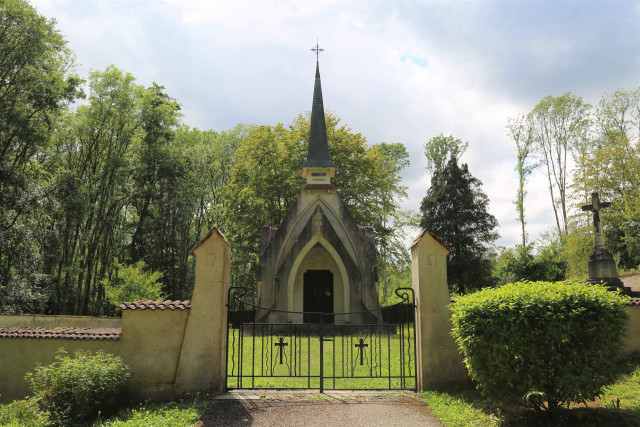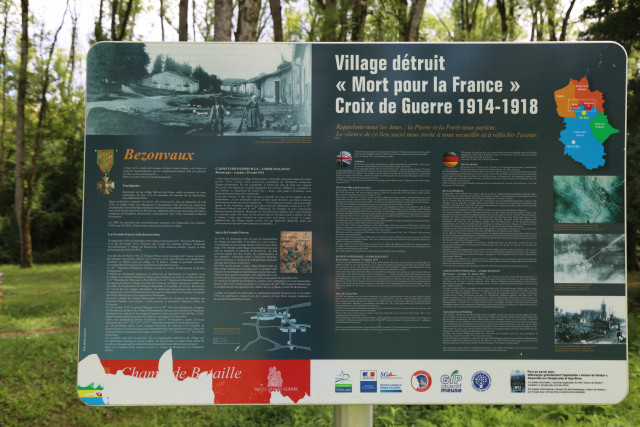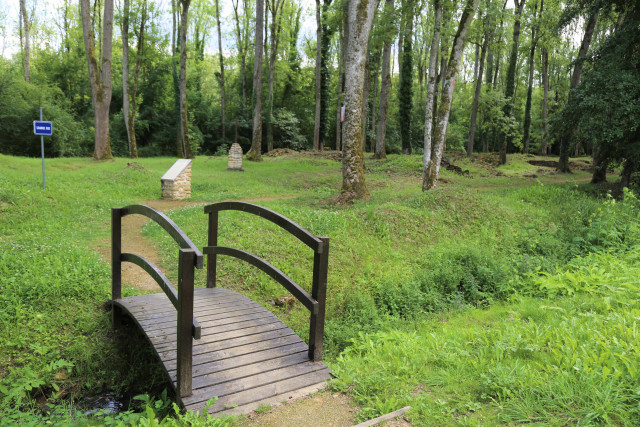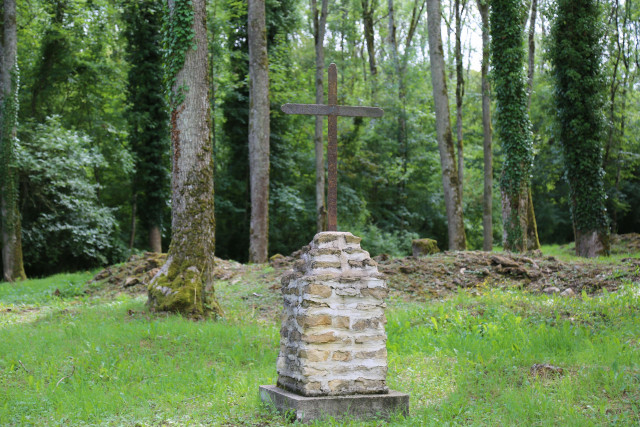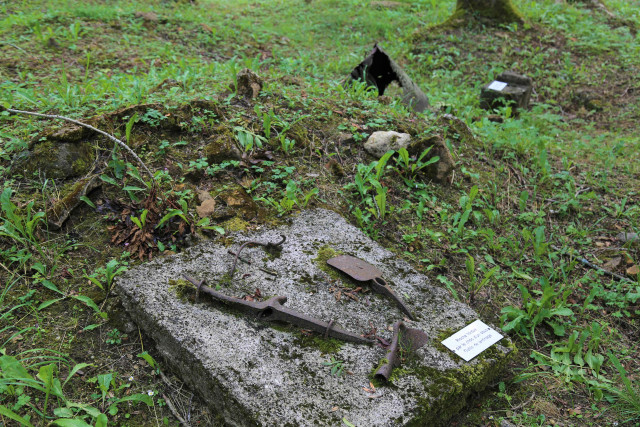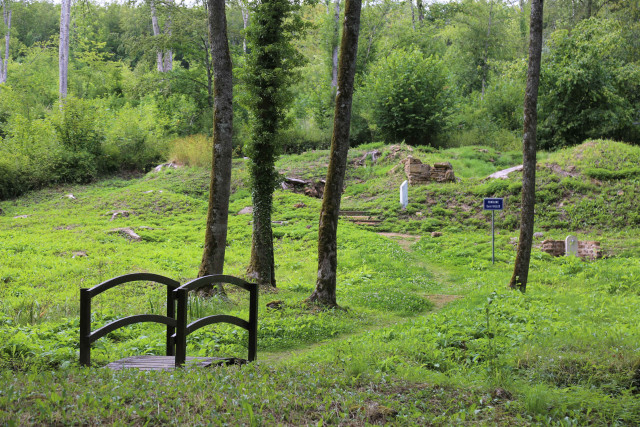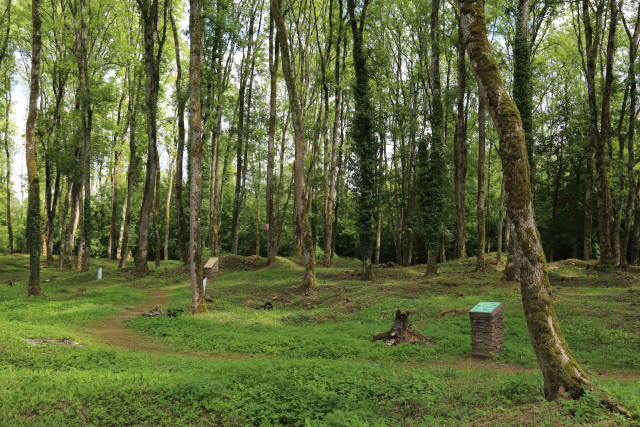The destroyed village of Fleury-devant-Douaumont
The destroyed village of Fleury-devant-Douaumont
Before the First World War, Fleury-devant-Douaumont was a village whose 422 inhabitants, in 1913, lived mainly from cereal farming and woodworking.
The main conflicts that took place in the region, revolutionary and empire wars, war of 1870 did not reach the village, located on wooded heights. After 1870, a railroad was built between Verdun and Douaumont which passes through Fleury. A certain number of defensive works were built in the area (the German Empire since 1871 then extended over part of Lorraine, the border being now about forty kilometres east of Fleury): the Souville redoubt, the Tavannes and Froideterre forts and several ancillary works. Many soldiers and workers passed through the town. In August 1914, the Verdun regiments passed through Fleury on their way to the Woëvre plain. With the Battle of the Marne, in September 1914, the front line was established a few kilometres north-east of the village. During 1915, it was part of the fortified area of Verdun and many soldiers were stationed there.
On February 21, 1916, the battle of Verdun began. The village was awakened by artillery fire in preparation for the German assault. The order was given to evacuate the village, under the snow. On 25 February the fort of Douaumont fell to the Germans, who now had a view of the bombed village. On 7 June, Fort de Vaux fell in turn. The front line now passed through the commune and Fleury, between the fort de Souville and the Froideterre fort, became a key position that could enable the Germans to break through towards Verdun. From June to August, the German command launched several offensives on this part of the front. In two months, the village was taken and recaptured 16 times by the French and Germans. On 23 June, the Germans threw several thousand shells at the village, some of them gas shells, followed by an offensive by the best imperial troops, the Bavarian Guard and the Alpenkorps. To hold the position, the men of the 121st Battalion of Foot Fighters sacrificed themselves. The French also tried to contain the attack by engaging their air force, which carried out machine-gun fire on the ground. The 260th brigade took over and bitter fighting went on for several days over only a few hectares. The village was taken on the 23rd by the Germans, retaken the next day by the French and again the day after by the Germans.
On 11 July, the Germans succeeded in taking La Poudrière, an advanced ammunition depot that had been buried to supply the surrounding forts. Some German soldiers managed to reach Centre D, a small earthen defence structure. This point marks the maximum German advance towards Verdun.
From 13 July to 5 August, intense fighting took place around the ruined village. During the night of 17 to 18 August 1916, the colonial infantry regiment of Morocco launched an assault and definitively retook the village. Together with the Zouaves and the riflemen of the 38th Infantry Division, they had been fighting for 10 days on the territory of the commune. Located in the Verdun sector, the village disappeared completely under the relentless shelling of French and German shells.
In 1918, the village was declared "dead for France". It is one of the nine villages destroyed during the Battle of Verdun. The tormented relief of the ground of the commune still testifies to the enormous quantity of shells received.
In 1916, the Normandy commune called Germany changed its name to Fleury-sur-Orne in honour of the destroyed village. Several villages in Bavaria have a street named Fleury, a name given in honour of the soldiers of the Bavarian Guard who fell during the assaults on the village.
Free access all year.





